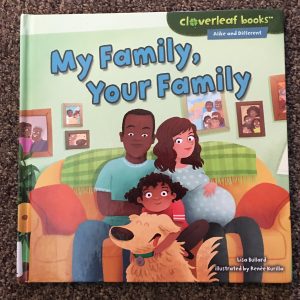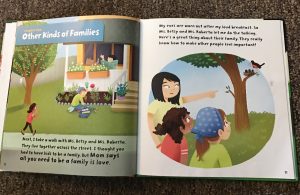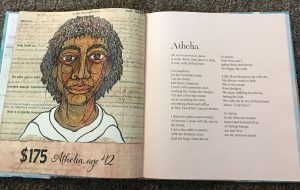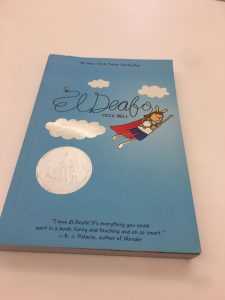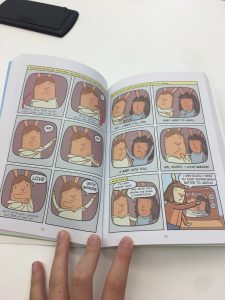Title: My Family, Your Family
Author(s): Lisa Bullard
Illustrator/Photographer: Renee Kurilla
Publisher and Year: Lerner Publishing 2015
Number of pages: 21
Tags/Themes: Allison Henry, Diversity, Family, Fiction, Picture Book, K-1, 2-3
Genre: Realistic Fiction
Descriptive Annotation: My Family, Your Family is a story that also has little bubbles with facts on each page. The story part follows Makayla as she travels around her neighborhood spending time with the various families that she knows. Makayla is about to have a little brother and she is very concerned that it will change their family. She sees, through the different families in town, that every family is great, and her new baby brother will make her family better. The fact bubbles include information about languages spoke at home, divorce, step-parents/siblings, and adoption. Young readers would be able to read and understand this book, and there is a glossary at the end that lists words mentioned in the story that relate to families. In addition to the glossary, there is a section titled “Make a ‘”One Great Thing”’ Poster” that provides step-by-step instructions for students to make a poster that shows one thing that makes their family great.
Classroom Application: My Family, Your Family can be used to show students that different types of families exist, and that they are all valid. It can be used to help teach Social and Emotional Learning Standard 2, by showing relationships different from the students. It also shows various ways that families maintain those relationships, such as communication and cooperation. This text could be used in an early education classroom to introduce the idea of differences in families.
Linguistic and Cultural Diversity Analysis: This book represents many different family types. Makayla herself is part of a mixed-race family. She meets a family that speaks Spanish, a lesbian couple, a girl and her divorced dad who are Asian, a boy who lives with his grandparents, a gay couple and their adopted son (also a mixed-race family) and has dinner with her single aunt and three cousins. Every one of these families is spoken of positively and the focus is on the family dynamic, not necessarily who is part of the family. When meeting Parker, the adopted boy with two dads, Makayla says, “And Parker’s two dads knew he was meant to be their little boy.” The emphasis is that the dads love Parker, not that they are gay. In the bubble on that page it says, “Some children who are adopted were born in the United States. Some were born in other countries. Either way, their adoptive families fell like they were meant to be together.” This is validating the families, showing that no matter how they came to be a family, they still love each other.
